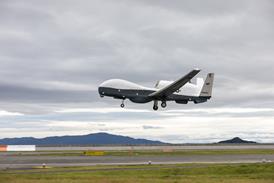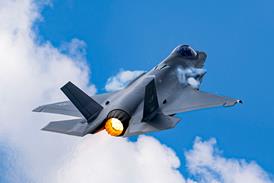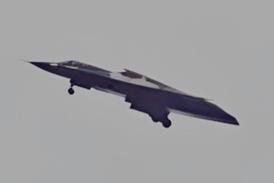Alaska Air Group sees its planned acquisition of Virgin America as a means to gain a substantial foothold in California and to acquire valuable gates and slots at several of the nation’s most constrained airports.
The deal will also enable Alaska, whose network is largely constrained to the Pacific Northwest, to expand eastward and begin flying highly-competitive transcontinental routes.
“They complement our geography very well,” Alaska’s chief executive Brad Tilden says of Virgin America during an analyst and media call today.
The combined Alaska and Virgin America network

Alaska Airlines and Virgin America
“We have been strong in the Pacific Northwest and Alaska. But while California is actually our second biggest state, we don’t fly east from there,” he says. “The California market is three-times the size of the markets of Alaska, Washington and Oregon combined.”
But while executives at publicly-traded Alaska praised the deal, Virgin America’s chief executive David Cush and Virgin founder Richard Branson were more muted in their responses.
“I would be lying if I didn’t admit sadness that our wonderful airline is merging with another,” says Branson in a letter on the Virgin Group website, noting that US government regulations limit his holding of shares that include voting rights. “There was sadly nothing I could do to stop it."
On the call with Alaska executives, Virgin America chief David Cush says: “While we didn’t really set out to sell the company… we are happy with the outcome. Our employees will be part of a bigger airline.”
The deal, which still requires shareholder and regulatory approval, would see Seattle-based Alaska purchase Virgin America, based in Burlingame near San Francisco, for $57 dollar per share, or about $2.6 billion, in cash.
Publicly-traded Virgin America’s shares were trading at about $30 a piece in mid-March, but spiked to more than $55 each after the merger news.
By acquiring Virgin America, Alaska will also shoulder about $1.4 billion of that company’s debt and aircraft leasing expenses, bringing the total cost of the deal to $4 billion, Alaska says.
The combined company would be led by Alaska’s executive team and based in Seattle.
Tilden calls the merger deal the culmination of a “hard fought competition” with New York-based JetBlue Airways.
The cost of the acquisition will be offset by about $225 million in annual economic benefits, including $175 million in additional revenue thanks to expansion of Alaska’s branded credit card membership and $50 million in efficiency savings, says Alaska chief commercial officer Andrew Harrison.
He adds that 90% of synergies will be achieved by 2019 but that the acquisition will improve Alaska’s earnings during the first year after it is approved.
Combined, the airlines will operate about 1,200 flights daily using about 280 aircraft, executives say.
Virgin America which carried 8.9 million seats in 2015, is only a fraction of the size of Alaska, which carried 39.6 million seats, according to Innovata data.
“We believe this transaction will be very good for our company out of the gate,” says Tilden.
Though the projected timeline is not final, Alaska expects Virgin America’s shareholders to approve the deal by June and US regulators to green light the merger in the third or fourth quarter of 2016. This would put the carriers on track to move to a single operating certificate by 2018.
RIGHT TIME
Executives insist that Alaska’s strong balance sheet and recent record profits made now the right time to acquire Virgin America.
Alaska’s operating profit jumped 35% year-rover-year in 2015 to $1.3 billion and the company ended the year with cash and marketable securities valued at $1.3 billion.
“We are operating from a position of strength,” says Tilden.
Alaska executives also dismiss the suggestion that the deal is a defensive measure aimed at heading off increased competition from low-cost rivals like Spirit Airlines and mainline carriers like Delta Air Lines. Instead, they insist that Alaska has long had an eye on California expansion.
“Alaska has done really, really well… with the real estate we have had,” says Tilden. “We just wanted more canvas to work with.”
“We talked for a long time to grow the business down in California,” adds chief financial officer Brandon Pedersen.
Alaska’s pilots, represented by the Air Line Pilots Association, International (ALPA), and its flight attendants, represented by the Association of Flight Attendants-CWA (AFA), also support for the deal.
Alaska’s ALPA representative Chris Notaro says the deal “provides both pilot groups with an outstanding opportunity to benefit from the growth of the expanded Alaska Airlines' route network”.
Virgin America’s pilots are also members of ALPA, and its flight attendants are members of Transport Workers Union.
EAST-WEST IMPROVEMENTS
Though Alaska has a strong presence in the northwest USA, it has been seeking additional routes from tightly-constrained Los Angeles International airport and San Francisco International airport, including east-west routes, says Harrison.
Alaska already flies to most California cities, but does so primarily from Seattle and Portland. It also operates a handful of transcontinental flights to restricted airports on the US east coast, including New York John F Kennedy International and Ronald Reagan Washington National airports.
Virgin, by comparison, holds “really valuable” gates and slots at all three New York airports - JFK, LaGuardia and Newark - and at Washington National, and operates highly-competitive cross-county routes from Los Angeles and San Francisco to Boston, JFK and Washington National, says Tilden.
He notes Alaska currently serves only two of the top ten destinations from San Francisco but will serve all 10 with the addition of Virgin America.

MERGING BRANDS AND FLEETS
Executives say little about the plans to integrate the companies’ differing brands, though Alaska’s media release says the combined airline would maintain its “customer-focused culture”.
While Alaska in many ways resembles a traditional network carrier – only smaller – ten-year old Virgin America has outfitted its aircraft with mood lighting and touch-screen ordering of inflight services. Virgin has said those touches are aimed at attracting tech-centric small-business workers and leisure travellers in California’s Bay Area and Silicon Valley.
Virgin’s brand is “likely driving a revenue premium”, says Tilden. “There is a chance we can use the Virgin brand in some form down the road.”
As for the future fleet, executives say Alaska prefers to operate only a single aircraft type, but stresses executives have not yet decided the fate of Virgin’s fleet of Airbus A320-family aircraft.
“But the Airbus is a proven airplane. We are going to learn from it and go from there,” says Tilden.
Source: Cirium Dashboard























